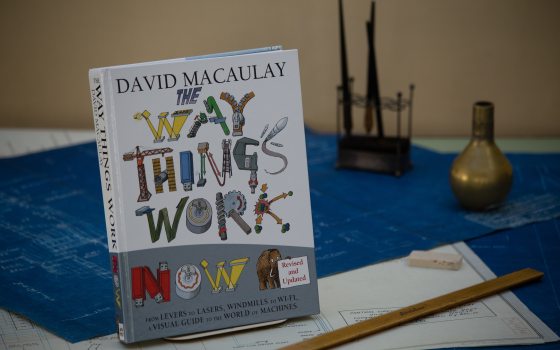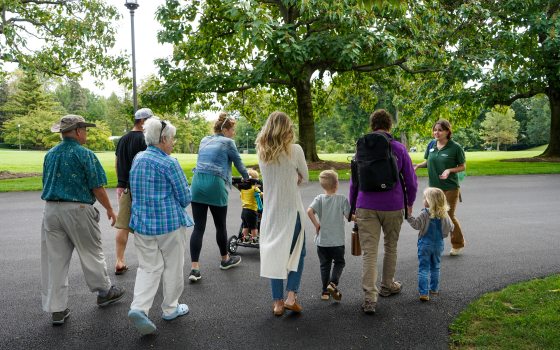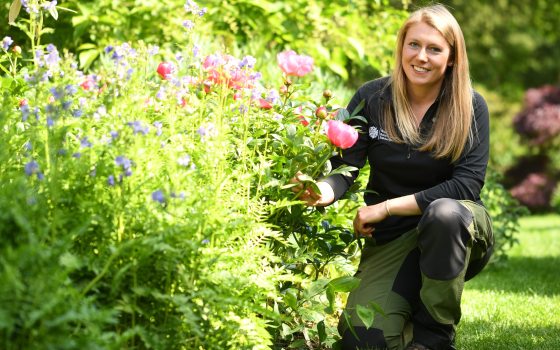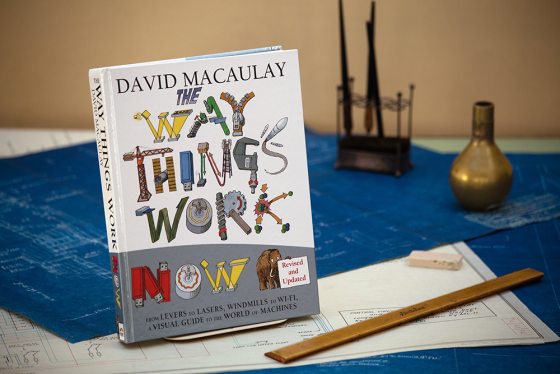
The Way Things Work Now by David Macaulay. Photo by Carol DeGuiseppi.
What does our 2017 Community Read selection, The Way Things Work Now, have in common with our Main Fountain Garden? Both are works of art and engineering that engage the imagination. Both were created by masters of their fields—David Macaulay is an award-winning author whose words and drawings help us imagine how technology works, while Pierre S. du Pont was a visionary business leader whose love of fountains placed that technology on spectacular display.
Moreover, both works are newly revitalized. Macaulay’s original The Way Things Work rolled off the presses in 1988, while Mr. du Pont’s Main Fountain Garden debuted in 1931. Of course, basic physical principles still apply, and Macaulay’s description of pumps, for example, remains unchanged in the 2016 edition of his now classic work. But starting May 27, our Main Fountain Garden will put those age-old principles to amazing new effect during our Summer of Spectacle, creating familiar fans, beautiful basketweaves, and pumping water 175 feet skyward.
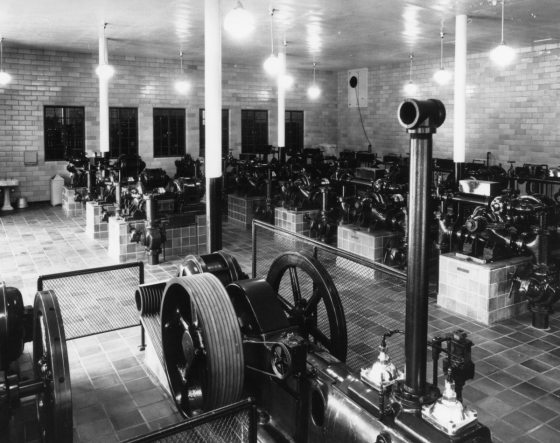
Original Main Fountain Garden Pumphouse. Photo by Gottlieb Hampfler. Learn more about the creation and engineering behind the original Main Fountain Garden in our new Historic Pumphouse Exhibit, opening May 27, 2017. See the original 18 pumps and mechanical systems that powered the fountains from 1931 to 2014 and explore the original machinery, drawings, and artifacts that depict the vision and design of these magnificent fountains.
It’s one thing to stand in awe of such technological wonders—and quite another thing to wonder, and to seek to understand. That’s what David Macaulay and this year’s Community Read do so well—they make us wonder not only about things that inspire awe, but also about things we might otherwise take for granted.
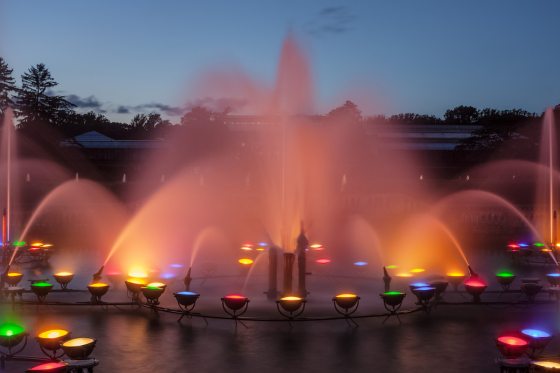
One of the last Main Fountain Garden performances to feature the original color Pyrex lenses. Photo by Sam Markey.
Things like light and color, and the 1,467 LEDs (light-emitting diodes) that will replace the Fountain Garden’s historic Holophane lights and Pyrex lenses. LED lamps have also made their way into The Way Things Work Now, where you can find out why they’re cooler and more efficient than incandescent bulbs. In our Fountain Fanfare lecture, Tim Martin, Performing Arts Assistant Production Manager and fountain show designer, called the updated lighting “one of the extraordinary differences between what the Garden was [then] and what the Garden is now.”
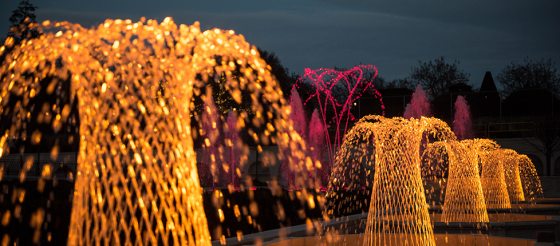
Revitalized Main Fountain Garden displaying basketweaves, spinning nozzles, and LED lights. Photo by Hank Davis.
But perhaps the most revolutionary breakthrough between then and now is illustrated by a whole new chapter in The Way Things Work Now: “The Digital Domain.” Here you’ll wonder at the workings of a technological landscape that was rapidly rising from the predigital soup when Macaulay was writing his original volume in the 1980s; and here is where we begin to understand one of the most evolutionary aspects of the Main Fountain Garden—its control.
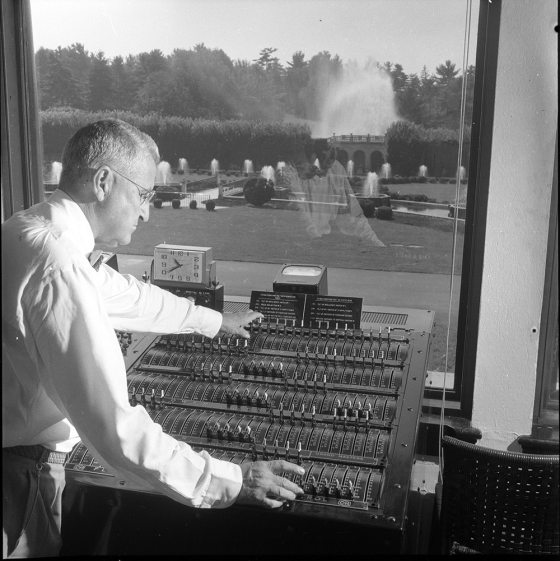
Russell “Phil” Brewer at the control panel of the Main Fountain Garden in 1958. Mr. Brewer, who created and headed the maintenance department at Longwood, provided much of the engineering expertise that brought Pierre du Pont’s vision to life. Photo by Gottlieb Hampfler.
From the “mammoth” control board of the original Fountain Garden with its 226 toggle switches and 125 levers; through the programming, using hand-typed commands, of the first musical fountain shows in 1980; to the present infinite mixing of streams of light and water, using Syncronorm software and a 3D visualizer to evoke the illusion of marquee lighting and lithe dancers swaying on stage to the music of Gershwin—from The Way Things Work to The Way Things Work Now has been a jaw-dropping journey. Can you even imagine what comes next?
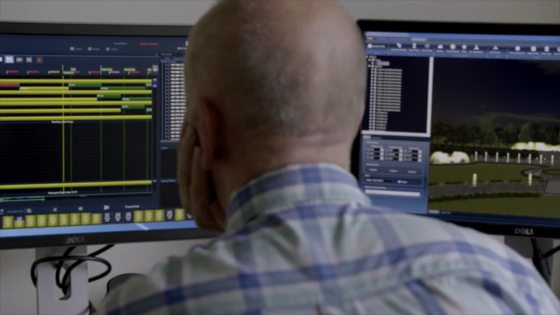
Colvin Randall uses Syncronorm software and 3D visualizer to create a fountain show for our 2017 Summer of Spectacle. Each 30-minute Illuminated Fountain Performance requires about 40 hours of programming and 40 hours of on-site nighttime viewing.
The answer is yes, you can. But it helps to know what has come before. So look for The Way Things Work Now on the shelf in your library or bookstore, or peruse it on your smartphone. Understanding basic principles of gravity, simple machines, the way water flows and how light reflects can help us reimagine a Fountain Garden, or inspire you to dream of the way things will work in the future.
David Macaulay’s The Way Things Work Now makes learning technology fun, less frightening, and highly possible, and our community of readers can help you along. So check out our list of partner events and join the conversation—and discover the way a Community Read works!
